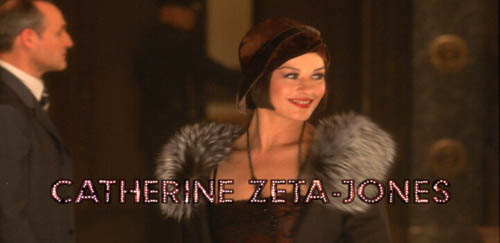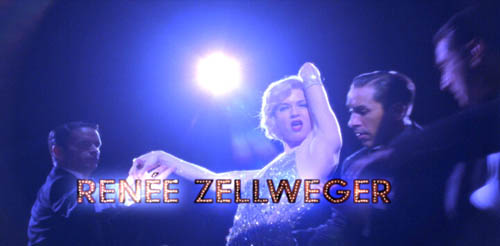FXG’s Sydney crew member caught up with Eyeon’s Adam Zolis based in Canada to discuss one of the industries top desktop solutions Digital Fusion.
FXG: Steve Roberts is one of the founders, he’s an Ex Aussie… Digital Fusion(DF) started at Sydney’s NYPD facility is that correct?
AZ: I don’t know if he would agree with the ex Aussie comment, there is enough Coopers Sparkling Ale, musk flavored candies, and chicken flavored chips floating around the office to prove otherwise !
You are right about NYPD and Digital Fusion though. DF was a proprietary compositing solution at the post facility Steve originally started in Sydney, NYPD. Shortly after some serious interest by Toronto based DPS, eyeon was born and moved to Ontario, Canada.
FXG: Is it true there is still a development team still here in Australia?
eyeon moved to Toronto in early 1997, and has been based here ever since. We do have a global development team, some of whom are based in Australia – Our staff does get to Australia on a fairly regular basis though, so we always have updated cricket scores !
FXG: It started in 1994 with a release on dos 6, and DF is currently running on Windows 2000 and XP with a Linux version is coming?
AZ: Yes, the Linux version will be showing at NAB and shipping directly after. There will also be a Linux node in the near future. A good number of large facilities are standardizing on the Linux platform, so it made perfect sense to port DF to Linux ASAP.
FXG: What are your other plans for NAB ?
AZ: NAB is a great opportunity for us to talk to our users face to face. Get an idea of what they are doing, what there needs are, etc. We will also be pushing the Linux Version that we are launching at NAB. So you can see the first public demo of DFLinux if you plan on being in Vegas in April.

FXG: Does the demo version of Digital Fusion (download at www.eyeonline.com) includes a full demo version and a demo of the cluster rendering?
AZ: Cluster rendering does work if your using the demo, and it basically applies background rendering to the network instead of calculating locally. The demo is essentially a fully functioning copy of the application. You can build and save flows, use it as a render manager, complete the sample courseware etc. The only limitations are, of course, the final renders are watermarked, and you can’t load 3rd party plug-ins.
FXG: For a while DF was packaged with Maya – how did that work out?
AZ:eyeon did two flavors of Maya Fusion for Alias. A light version that shipped with all Maya’s on Windows and Maya Fusion, which was essentially the same as Digital Fusion, except it had Maya marking menus and looked the same as Maya. It stopped in Feb 2001 when Alias consolidated its focus into Maya 3D. At the same time they stopped the A|W Composer development as well.
FXG: Who is behind Eyeon?
AZ: eyeon was half owned by DPS who has since been bought up by Leitch. Going from a small post-production company in Australia too a global Software company, selling visual effects solutions is a big paradigm shift, so partnerships are necessary.

FXG: Can you talk about DFScript, your integrated scripting based on an open source language (Lua 5.0) – That seems to be a real strength for DF?
AZ: Indeed, this has really come to the forefront, as one of the power features showcased in Digital Fusion 4. It has enabled a number of our users to create custom solutions, from vastly speeding up repetitive tasks to integrating Digital Fusion into a custom project management system. It also allows us to provide features and enhancements via scripts without the usual time involved in a release cycle; significantly reducing response times to users’ requests and problems. The open-source Lua language was a natural choice for DFScript, providing a small, efficient and stable system designed from the ground up for embedded application scripting. In conjunction with the free SciTe editor, which supports Lua and DFScript files directly, this provides an easy to use environment for creating custom scripts and extending the power of Digital Fusion even further, in ways that were simply impossible prior to DFScript.
FXG: Digital Fusion 4 is fully multithreaded for maximum CPU efficiency and interface response and the new RAM caching and cluster rendering provide interactive real-time playback based on limited memory resources, in many respects your getting incredible performance on a 2003 DF4 system aren’t you ?
AZ: We are definitely getting great performance. The quick progression of desktop technology, mainly processor speeds, is making desktop compositing a fantastic solution for post-production facilities. We offer fast, effective and flexible compositing at a fraction of the price of other alternatives. We are very aware of upcoming technologies, like 64 bit processors and potentially 64 bit OS’s that may offer more then 2GB’s or in XP’s case closer to 3 GB’s of RAM. If you are working with 2K, 4K, or 6K film plates or HD footage for that matter, Digital Fusion can already handle it, so the potential is to only get faster. We have seen some really intense pipelines running DF, increasing it’s interactivity fantastically while generating really tremendous speed and efficiency.
FXG: Like Shake, the new floating point color processing increases the accuracy of color correction, enabling the artist to work above 16-bit color depth for film integration ?
AZ: That is correct. You still have 8 and 16 bit capabilities, and can mix and match resolution with in one project if need be, but the floating point color processing allows for a much more accurate interpretation of color by recognizing color values that 16bit just can’t comprehend. So if you are working with Cineon files, or HDRI file formats like OpenEXR, you can draw out image detail that would otherwise be washed out by white or black.
FXG: In the last major release you included a new re-designed tracking tool, how has that gone over with users ?
AZ: The new tracker has been very popular. Unlimited tracking points are mostly a flexibility issue. We take existing features and try to bring them inline with the overall product philosophy, which is to provide an infinite number of ways to accomplish any given task. Just because we can’t think of an immediate reason for certain functionality, doesn’t mean it might not become an invaluable feature to a particular artists at any given time. So we basically took the DF3.1 tracker, and consolidated functionality like stabilization for example, and increased its versatility and power.
FXG: What recent projects have used DF?
AZ: Most recently completed was the DMX flick, Cradle 2 The Grave, but we have also been used extensively on Final Destination II, Chicago, and The Core. Television wise, we were used on every shot of the Shania Twain “I’m Gonna Getcha Good” Music Video, and Steven Spielberg’s Taken, which aired on the SciFi Channel, and was nominated for a Golden Globe for best Mini Series. The list is quite large, as well as diverse. We have users at NASA, MIT, and various research facilities. DF is often used for Stereoscopic rides, planetariums, and video games as well. There are many applications that reach outside of the entertainment industry or at least to its outskirts.

FXG NOTE:
In terms of plug ins there are currently :
– 5D monsters – now from Speedsix
– Gaia3df
www.fusioneers.net
www.revisionfx.com
– Primatte
– Ultimatte
– a convertor for AE plugins… written by Eyeon , After Effects Plugin Adapter ( DF 3 or higher)
– Tinderbox 1 & 2
– Knoll Light Box
– Shine
– Boris Effects
– Cinelook film look
– krokodove
NB Images from :
Burbank California based, Custom Film Effects, for the oscar-nominated film Chicago, and
DreamWorks SKG in which DF was used to help complete the visual effects for Steven Spielberg’s Taken. Taken chronicles the stories of three families over multiple generations and their involvement with historic alien abductions. Taken broke all previous rating records on the Sci-Fi Channel and was nominated for a Golden Globe for ‘Best Miniseries’.
